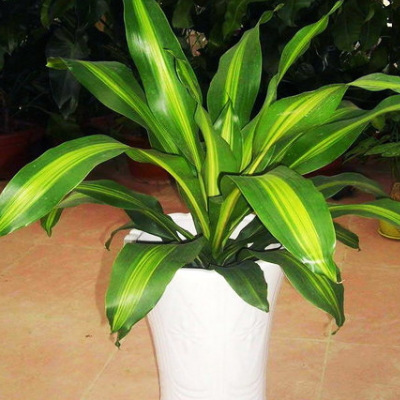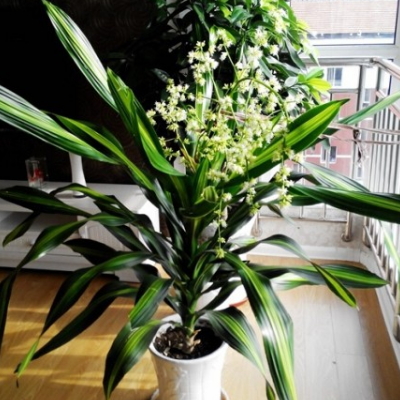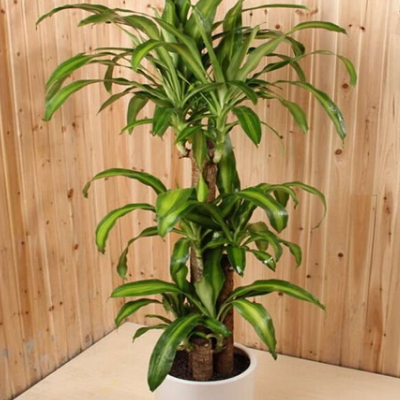The difference between Brazilian Iron and Yemeni Iron
Brazilian iron, which is a very beautiful plant, grows up easily. How to raise Brazilian iron? What's the difference between Brazilian iron and Yemeni iron?

How to raise Brazilian iron:
1. Brazilian iron prefers warmth, shade, fertilizer and cold resistance. It is suitable for cultivation in loose, well-drained and fertile substrates. It can usually be planted in a culture soil made of vegetable garden soil, rotten leaf soil, peat soil and river sand in the proportion of 4-4-2-1-1.
two。 If the branches are strong, the culture soil can be made of coconut bran, peat soil or vegetable garden soil and river sand. Usually should ensure that the Brazilian iron growth environment humidity, often spray water to the leaves, keep the soil moist but do not make its stagnant water, so as not to rot the roots.
3. The suitable temperature for the growth of Brazilian iron is 20 ℃ ~ 30 ℃. Liquid fertilizer or granular compound fertilizer is applied once or twice a month during the growth period to ensure the luxuriant growth of branches and leaves.
4. In winter, fertilizer should be stopped and moved indoors for the winter. Strong light will cause the leaves to turn yellow, and too much shade will dilute the color of the leaves. For variegated varieties, the proportion of nitrogen fertilizer should be reduced to avoid excessive growth of leaves and lead to the disappearance of markings.
5. In the late autumn, in addition to controlling the amount of water, 0.2%-0.5% phosphoric acid can be sprayed, and phosphorus and potassium fertilizers such as oxygen and potassium can improve the cold resistance and overwintering ability of plants in winter.
6. In daily maintenance, Brazilian iron often has diseases and insect pests such as longicorn beetles, such as longicorn beetles, heart decay or skin erosion, causing plants to rot or peel to death. Once found, they can be perfused or sprayed with 50% dichlorvos 800 mi 1000 times solution.
The difference between Brazilian and Yemeni iron:
The main results are as follows: 1. The blade of Brazilian iron is soft, the leaf tip is sagging obviously, and the arch is sagging.
2. The leaf of Yemeni iron is hard, the leaf tip is not sagging obviously, and the leaf is obliquely extended.
3. Brazilian iron on the market is mostly horticulture, gold heart or Phnom Penh.
4. Yemeni iron leaves are slightly longer than Brazilian iron leaves (different plants, different periods).
All right, this is the end of the introduction of the difference between Brazilian Iron and Yemeni Iron. My friends all know how to raise Brazilian Iron.
What's the difference between Yemeni Iron and Brazilian Iron? Identification of Brazilian Iron and Yemeni Iron Pictures
Introduction: Yemeni iron and Brazilian iron are both dragon blood foliage plants, these two indoor potted plants look very similar, without paying attention to the distinction, it is easy to regard them as the same plant, so what is the difference between the two? Below the first agricultural scripture editor will introduce to you the plant characteristics and some of the most intuitive differences between Yemeni iron and Brazilian iron.
Yemeni iron
Yemeni iron is a tequila family dragon blood tree, the leaves are wide stripe, the stem is erect, the leaf color is dark green, the plant shape is symmetrical, the leaf is long lanceolate, 30 cm long, 10 cm wide, strong in nature, strong adaptability to light and red, the old leaves will be more dark green and green in low light, sessile, leaf margin microwave-like. The leaves are beautiful in color and shady in nature. Umbels arranged in racemes, flowers small, yellowish green, fragrant, florescence from June to August, berries globose. Sex likes high temperature and humidity, and the suitable growth temperature is 20 ℃ 35 ℃. In winter, cold prevention measures should be taken to prevent the leaves from withering and drying. Pay attention to good ventilation and keep the air relative humidity above 80%.
Brazilian iron
Brazilian iron is a perennial woody foliage plant of the family Liliaceae, evergreen trees, which can be as high as 6 meters in the country of origin, and the general potted plant is 50 meters high and 100 centimeters high. Its trunk is erect and sometimes branched. The leaf cluster is born at the top of the stem, long oval-lanceolate, without petiole; the leaf is 40ml 90cm long and 6mi 10cm wide, curved into an arch, the leaf margin undulates, and the leaf tip is slightly obtuse; bright green, shiny. Spikes, flowers small, yellowish green, fragrant. Its nature likes high temperature and humidity and good ventilation environment, more like light, but also resistant to shade, afraid of strong B, avoid dryness and drought, like loose, well-drained sandy loam. The suitable temperature for growth is 20-30 ℃, the dormancy temperature is 13 ℃, and the overwintering temperature is 5 ℃.
The difference between Yemeni Iron and Brazilian Iron
Overall, the most intuitive differences between Yemeni Iron and Brazilian Iron are as follows:
The main results are as follows: 1. The blade of Brazilian iron is soft, the leaf tip is sagging obviously, and the arch is sagging.
2. The leaf of Yemeni iron is hard, the leaf tip is not sagging obviously, and it is obliquely extended.
3. Brazilian iron on the market is mostly horticulture, gold heart or Phnom Penh.
4. Yemeni iron leaves are slightly longer than Brazilian iron leaves (different plants, different periods).
- Prev

Is the Yemeni iron poisonous? what if the leaves turn yellow?
Yemeni iron, which can be raised in the office, is of ornamental value. Is Yemeni iron toxic? What if the Yemeni iron leaves turn yellow? Yemeni iron toxic: non-toxic, she likes high temperature, high humidity and good ventilation environment, suitable growth temperature is 20-30 ℃, prefer light and shade, afraid of hot sun, avoid dryness and drought.
- Next

Can Brazilian wood be hydroponically cultivated? it's too high. How to trim it?
Brazilian wood is very easy to grow tall and needs to be trimmed at a certain time. Can Brazilian wood be hydroponically cultivated? How to trim the Brazilian wood if it is too high? Can Brazilian wood be hydroponically cultivated: many flower lovers are already hydroponic, proving that Brazilian wood can be hydroponically cultivated. The branches of Brazilian wood are tall and straight, vigorous and simple, and the leaves are green and gentle.
Related
- Fuxing push coffee new agricultural production and marketing class: lack of small-scale processing plants
- Jujube rice field leisure farm deep ploughing Yilan for five years to create a space for organic food and play
- Nongyu Farm-A trial of organic papaya for brave women with advanced technology
- Four points for attention in the prevention and control of diseases and insect pests of edible fungi
- How to add nutrient solution to Edible Fungi
- Is there any good way to control edible fungus mites?
- Open Inoculation Technology of Edible Fungi
- Is there any clever way to use fertilizer for edible fungus in winter?
- What agents are used to kill the pathogens of edible fungi in the mushroom shed?
- Rapid drying of Edible Fungi

